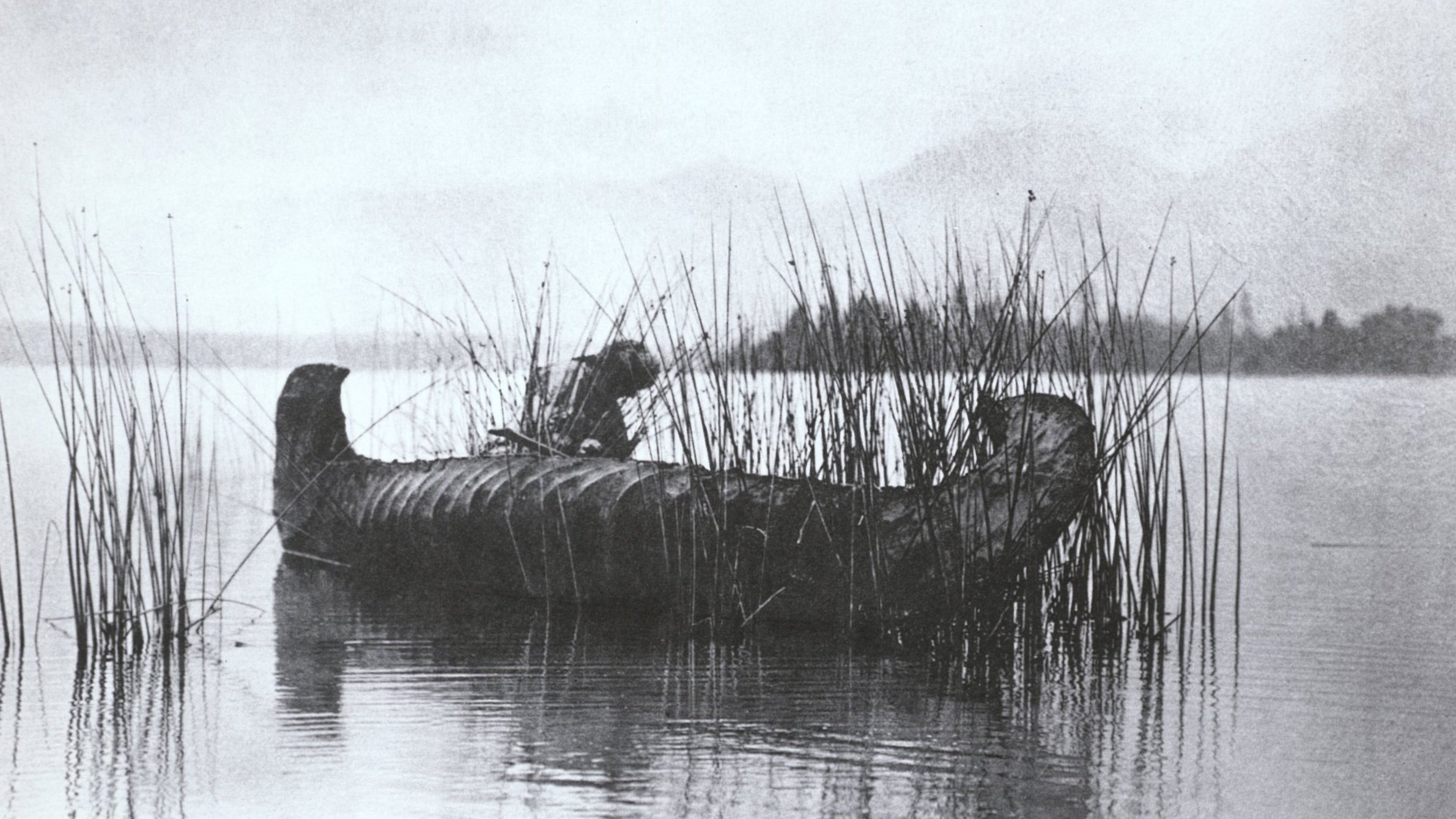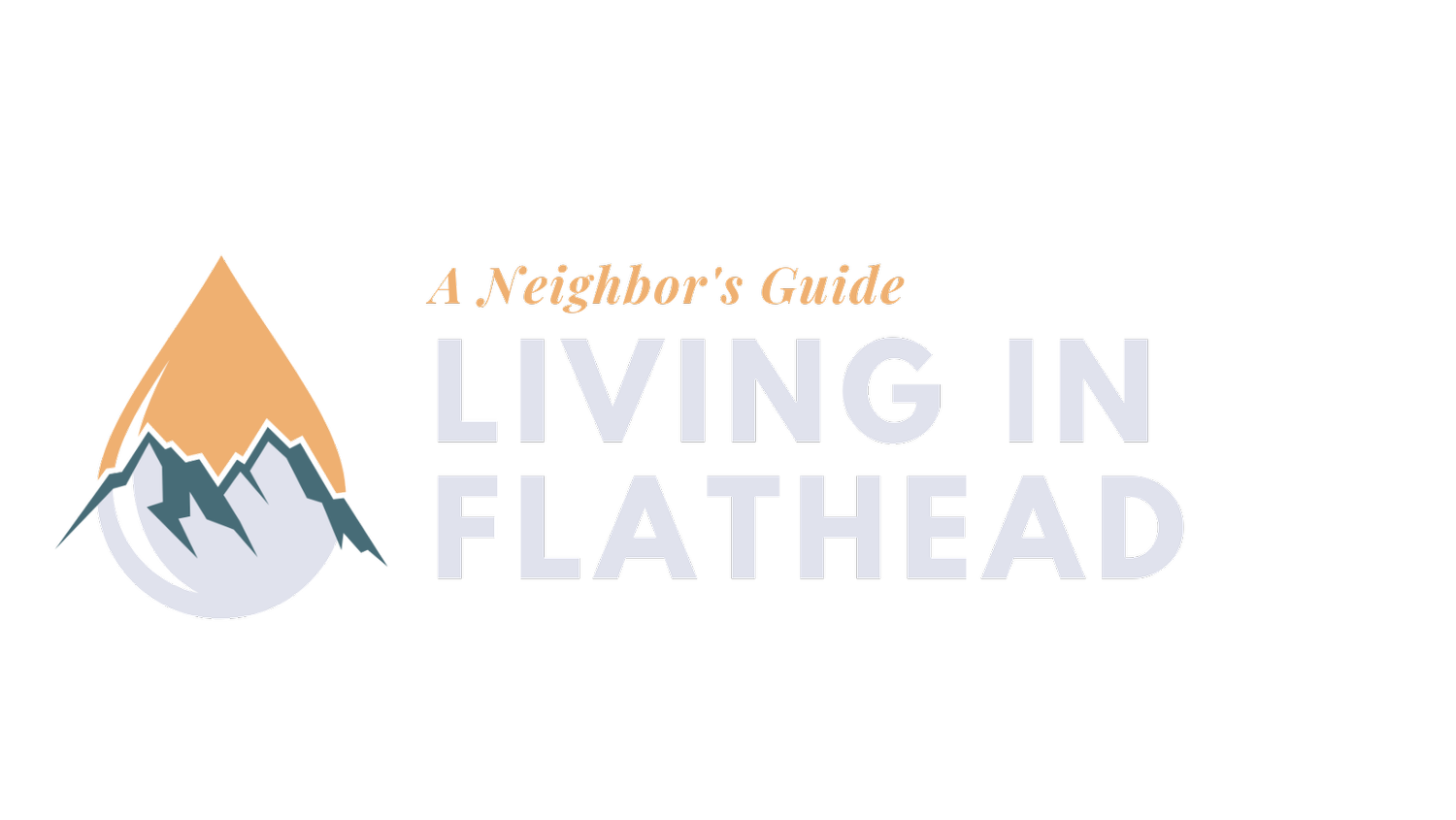
Kutenai canoe, by Edward Sherriff Curtis, 1868–1952.
Confederated Salish & Kootenai Tribes
The earliest occupants and environmental stewards of the Flathead were the ancestors of contemporary Indigenous Tribal nations, including Salish or “Flathead”(Séliš), Pend d’Oreille or “Kalispel” (Ql̓ispé) and Kootenai (Ksanka).
Take time to learn about the region and the first stewards of the Flathead.
Culture & History
According to the oral histories of the Salish, Pend d'Oreille, and Kootenai (Séliš, Ql̓ispé, and Ksanka) people, their ancestors have inhabited the mountains and plains of the Northwest since the beginning of time. This long occupation is reinforced by stories told by the Tribes which reference a land covered in ice and populated by megafauna, potentially recalling Montana as it was in the last Ice Age.
Tribes’ ethnographer Thompson Smith writes how the Tribes’ creation stories echo those told by scientists about the last Ice Age. “Many of the monster-animals bear a close resemblance to what scientists call the Pleistocene megafauna. The descriptions of cold and ice, of dammed rivers, and of great floods, echo geologists’ accounts of Glacial Lake Missoula—which finally drained about 13,000 years ago.” The native people’s relationships with the landscape was forged through millennia.
-

History: aay u sqélix͏ʷ A History of Bull Trout and the Salish and Pend D’Oreille People
Tribal History and Ethnogeography Projects for the Séliš Qĺispe Culture Committee, by Thompson Smith.
-

Listen to the Elder’s stories of growing up fishing and camping, and the changes they have witnessed over their lifetime.
-

Cultural resources connect us to events and people of the past. They are unique and irreplaceable. Do not remove or damage any cultural artifacts. Leave them where found. They are protected by Tribal, federal, and state laws.
Living with the Land
A healthy environment is essential for maintaining modern and traditional lifeways.
The Tribes' long and prosperous tenure is based on a respectful and reciprocal relationship with the world around them. Séliš, Ql̓ispé, and Ksanka peoples lived through hunting, fishing, and foraging across the landscapes of the mountain west. They altered the land in ways that made it more livable for subsistence practices, conducting controlled burns and managing resources with a deep knowledge of the land's needs. This community and environmentally-focused ethos continues to guide the Confederated Salish and Kootenai Tribes (CSKT) today.
-

Learn about the traditional use of fire by Tribes, how it has changed in recent history, and their efforts today to restore landscapes by reintroducing fire.
-

Explore this interactive map and learn about the trees, shrubs, and mammals of the Lower Flathead River.
-

Explore the natural history of this river, bull trout, Tribal people, and the role that humans have played in the valley since time immemorial.
-
Permits to fish, hunt, and recreate in the Flathead Reservation must be purchased.
A Changing Landscape
The following Story Maps tell about native people’s relationships with the landscape forged through millennia.
These Story Maps present the Confederated Salish & Kootenai Tribes’ perspectives, challenges, and the restoration solutions they are using to restore the Flathead landscape. These stories, drawn from the CSKT Climate Change Strategic Plan, help guide and inform relationships, management, and projects across sectors.
-

The vast network of water in the region has sustained the Tribes for generations, providing sustenance, habitat for essential species such as bull trout, routes for travel, and an essential part of the people's spiritual identity.
Learn what the Tribes are doing to address drought, pollution, water quantity, and distribution so that water remains a good habitat for people and animals alike.
-

Forestry: Silviculture, fire management, and restoring ancient ecosystems
Whitebark Pine, or sc ̌̓iɫpálq͏ ʷ, and other trees on the reservation provide sustenance and shelter to animals and people.
Forest ecosystems are under threat from fires, diseases, and past management decisions. Learn what the Tribes are doing to improve forest health and build resilient forests.
-

Fish: Preserving culturally important species in the waters of the Flathead Reservation
Learn what the Tribes are doing to address threats to culturally important fish species.
-

Wildlife: Fostering Diverse Ecosystems
‘The Salish, Pend d'Oreille, and Kootenai tribes have long understood that they are not the sole residents of Montana's plains, mountains, forests, and wetlands.’
Learn what the Tribes are doing to conserve essential animal habitats.

